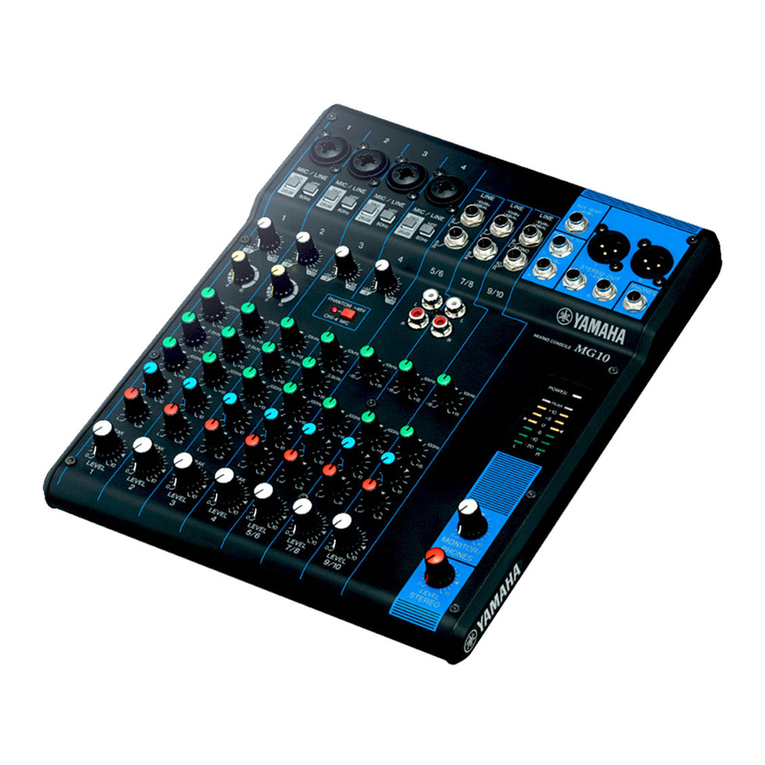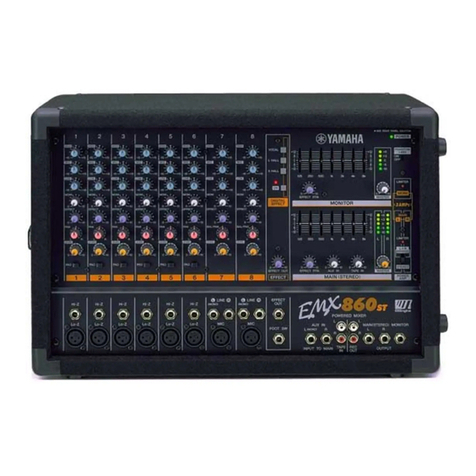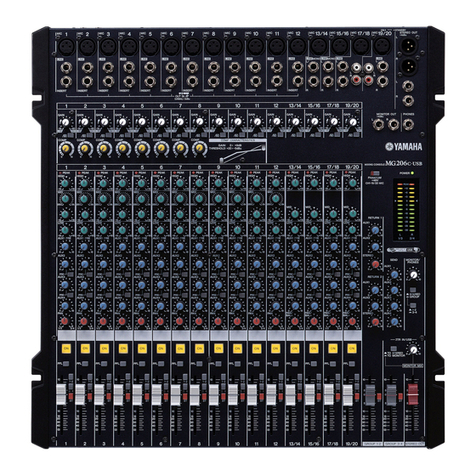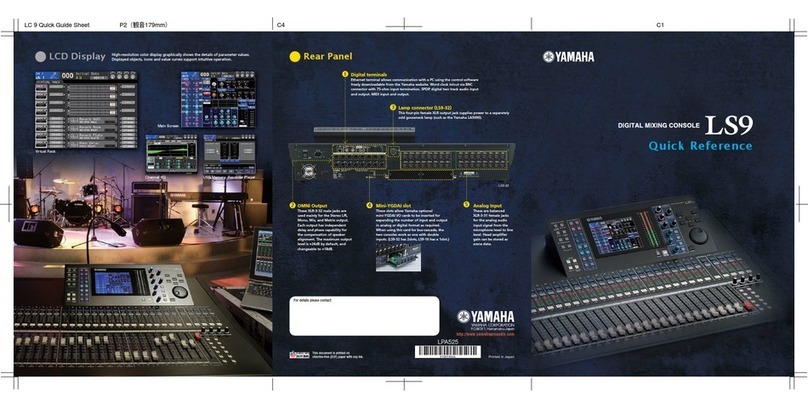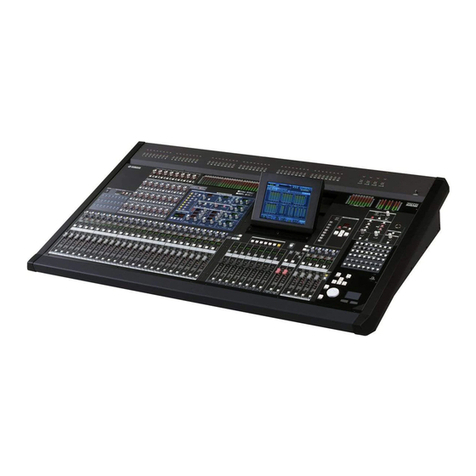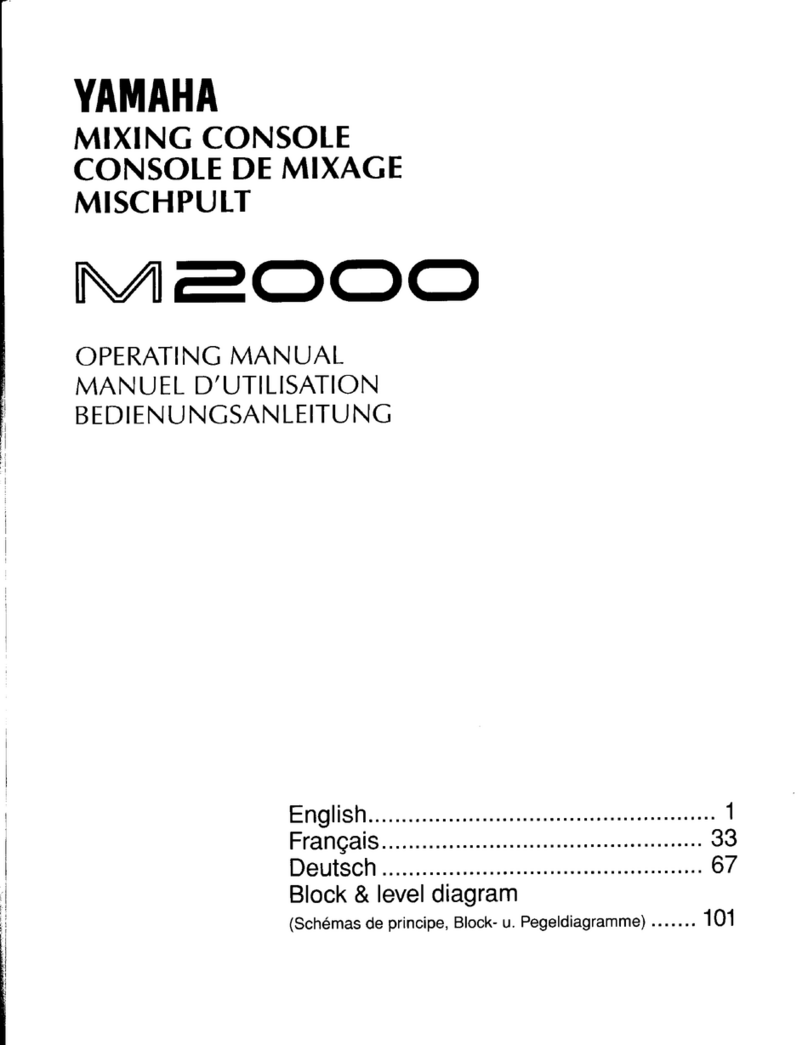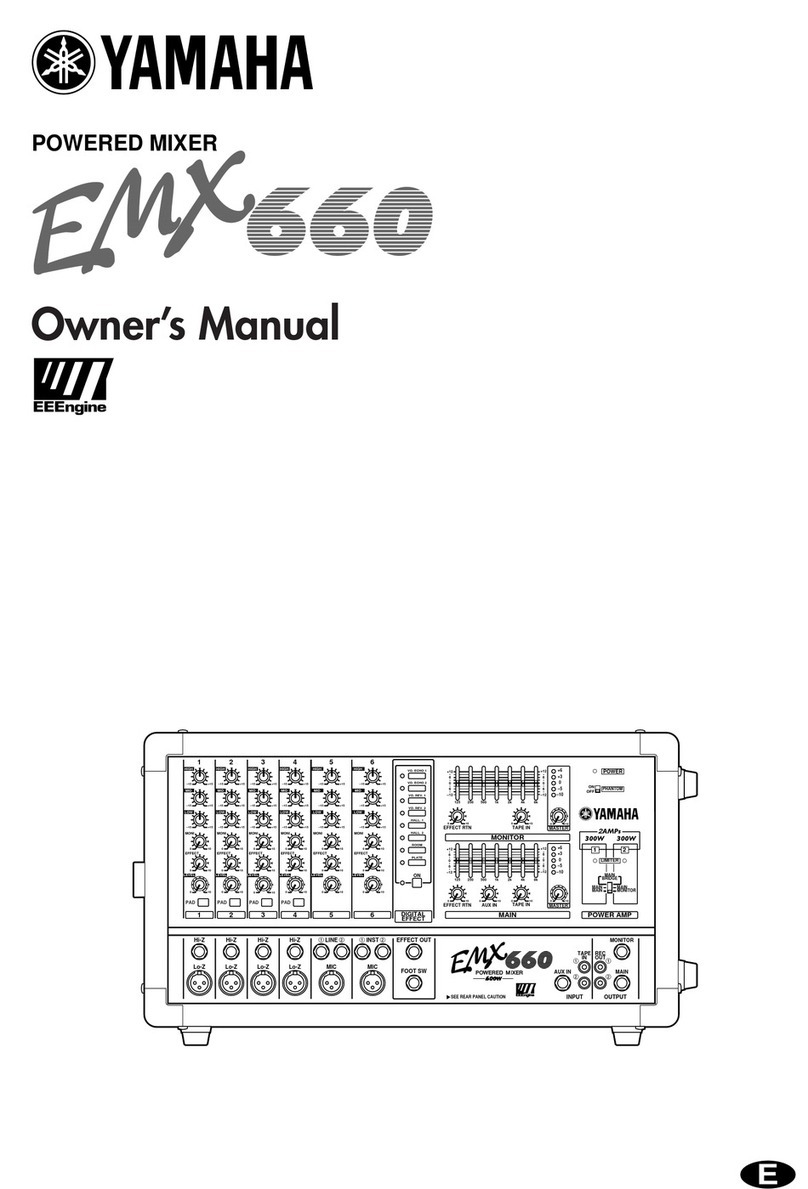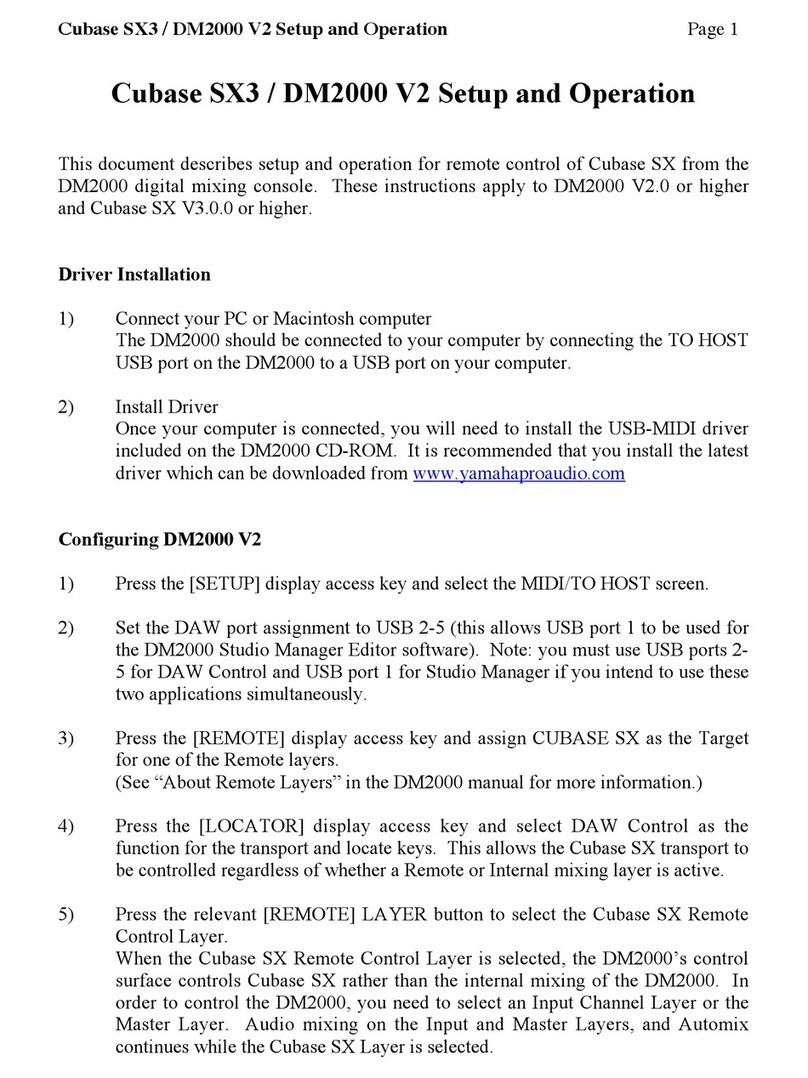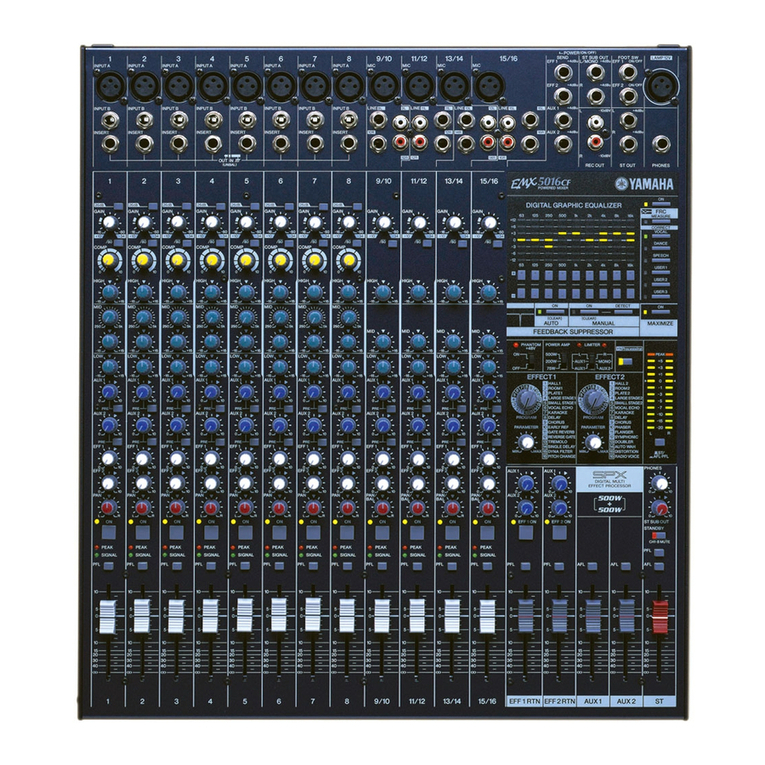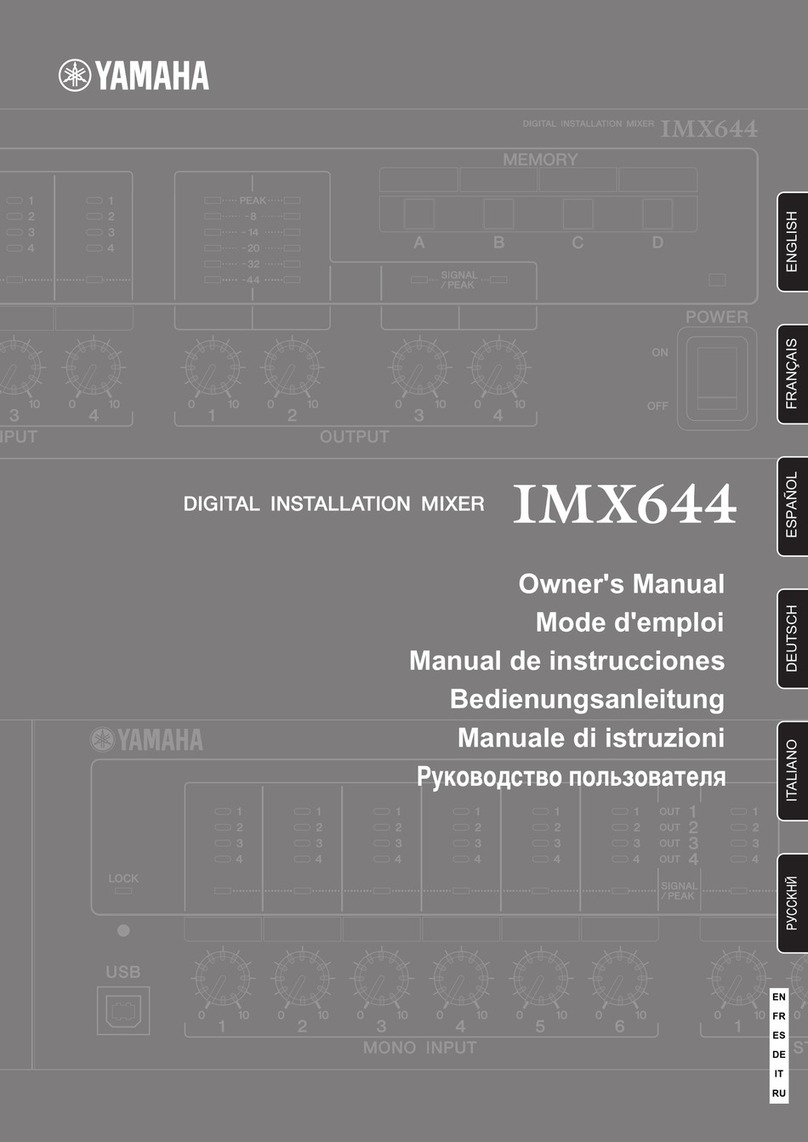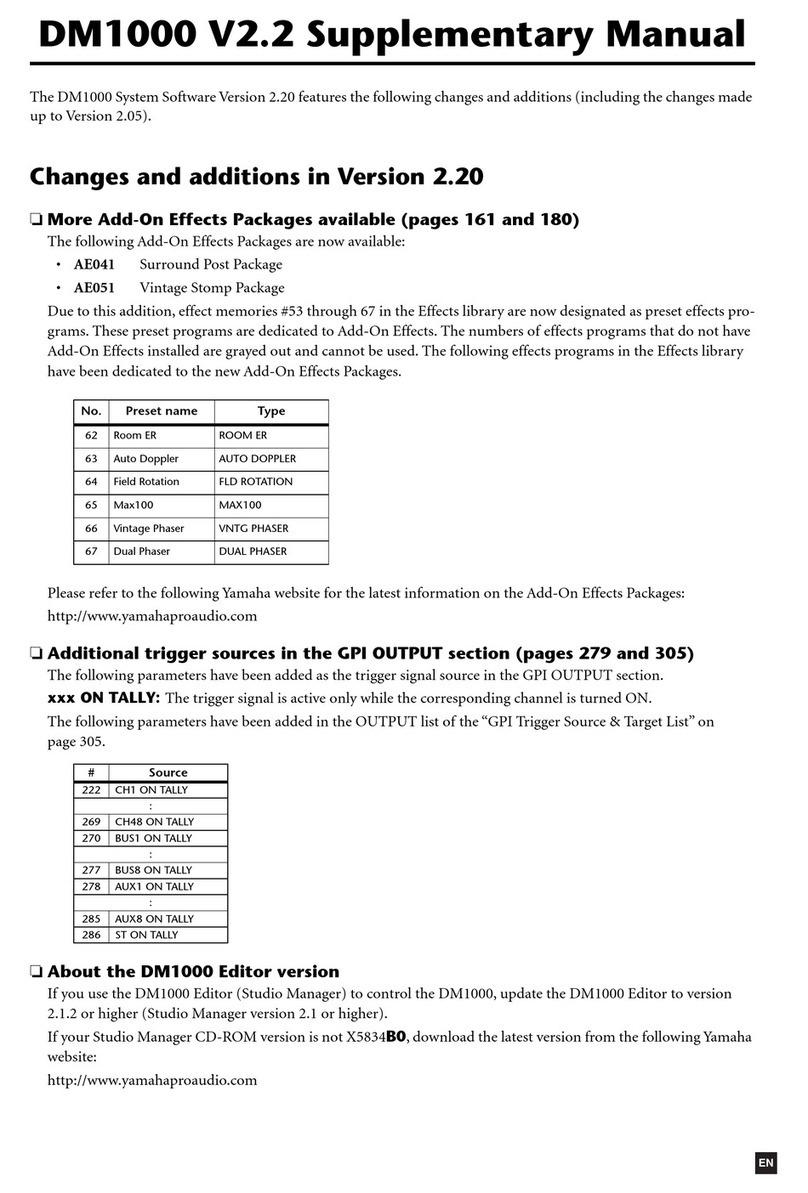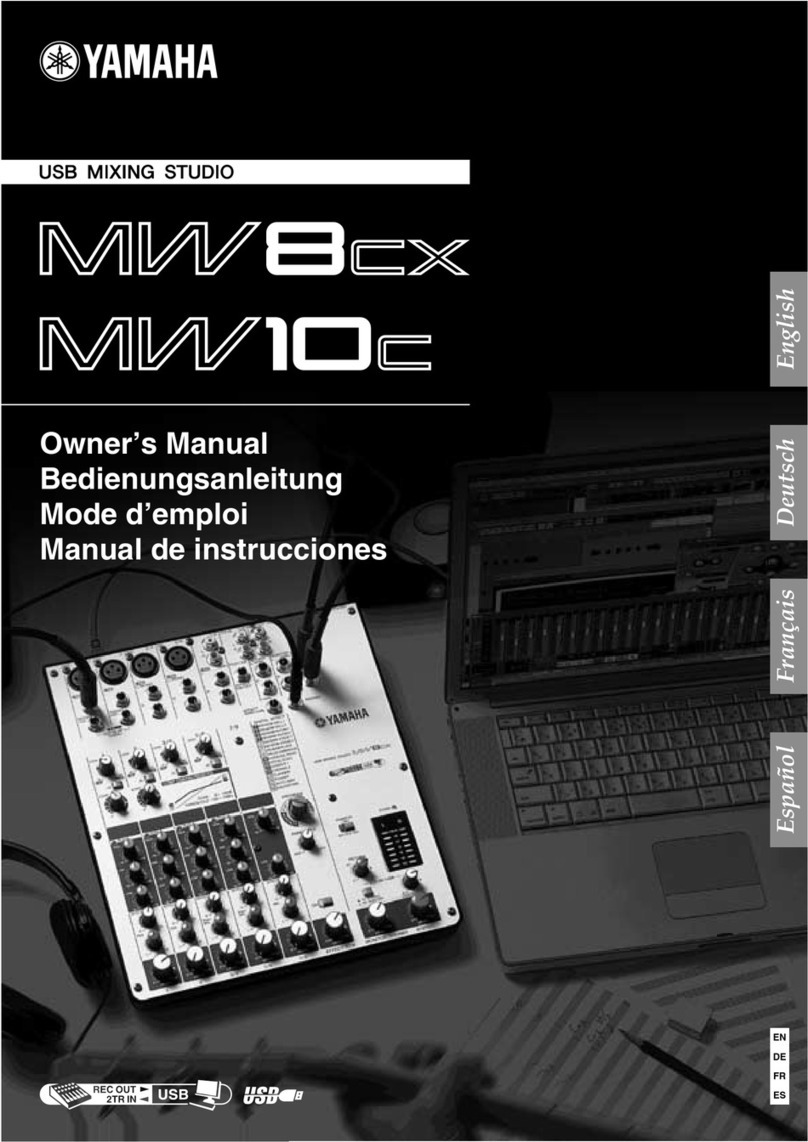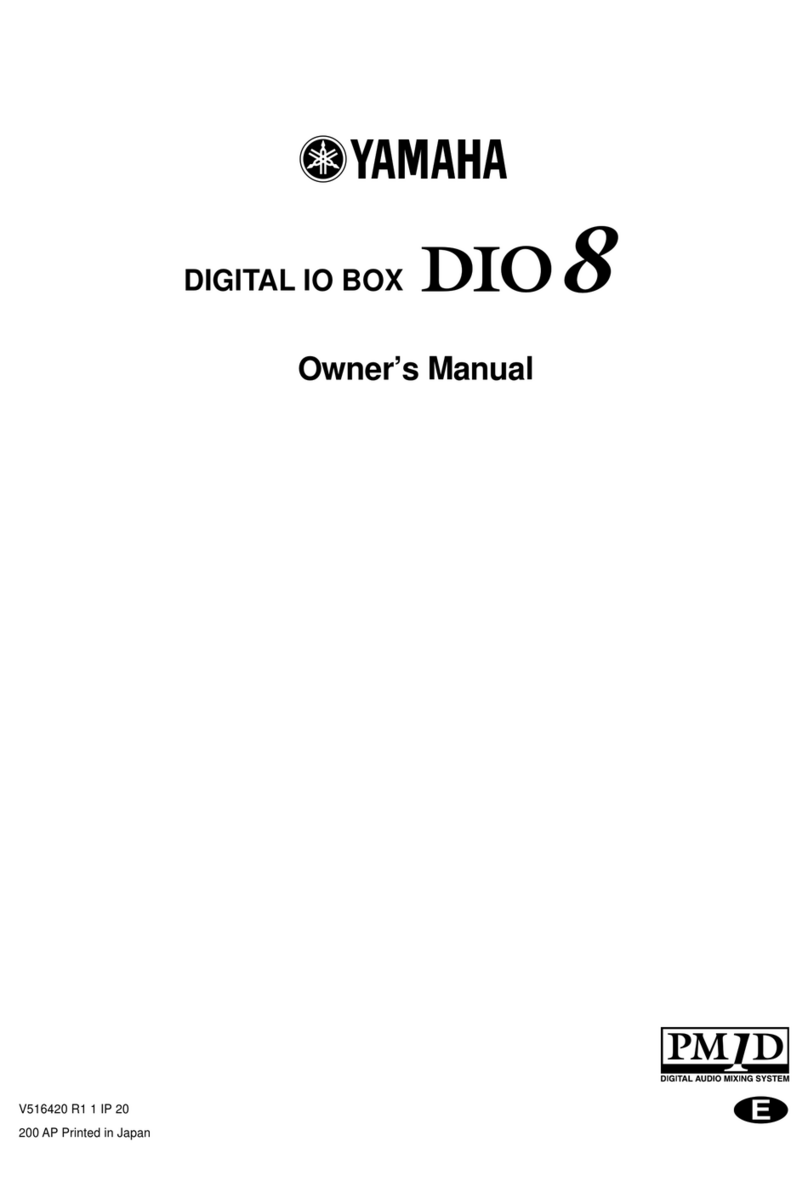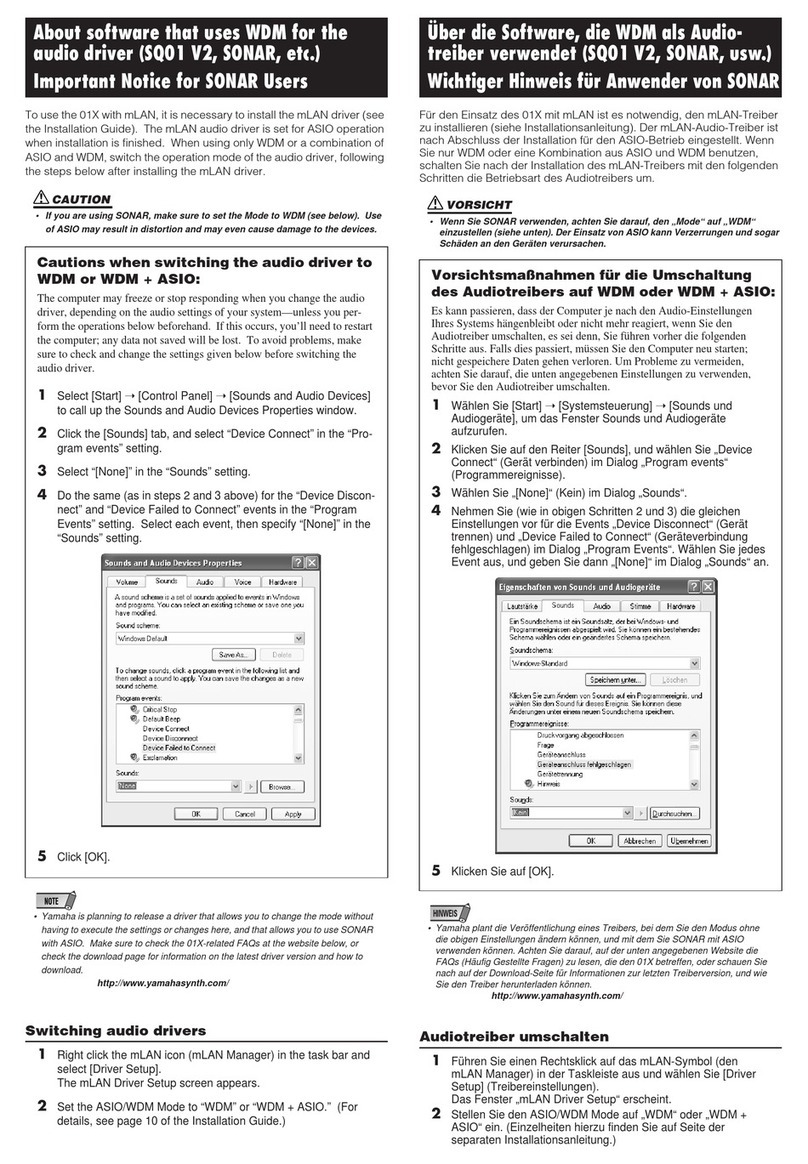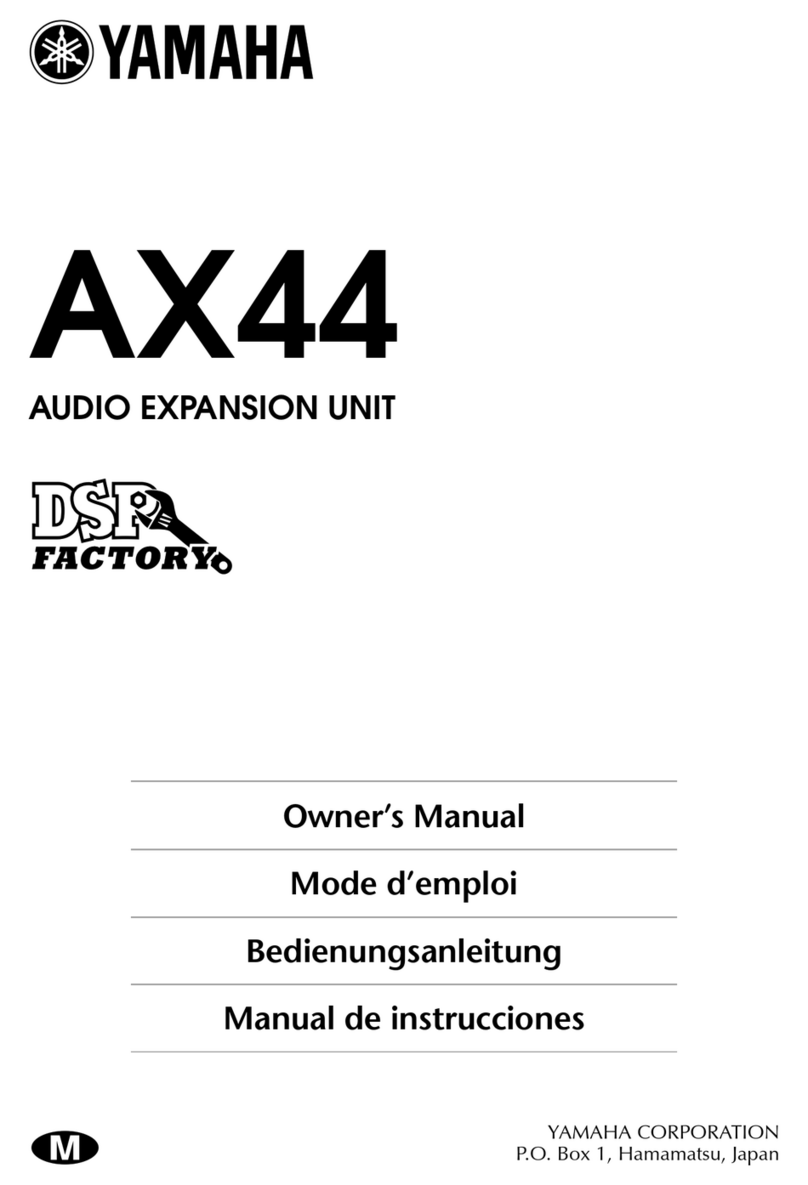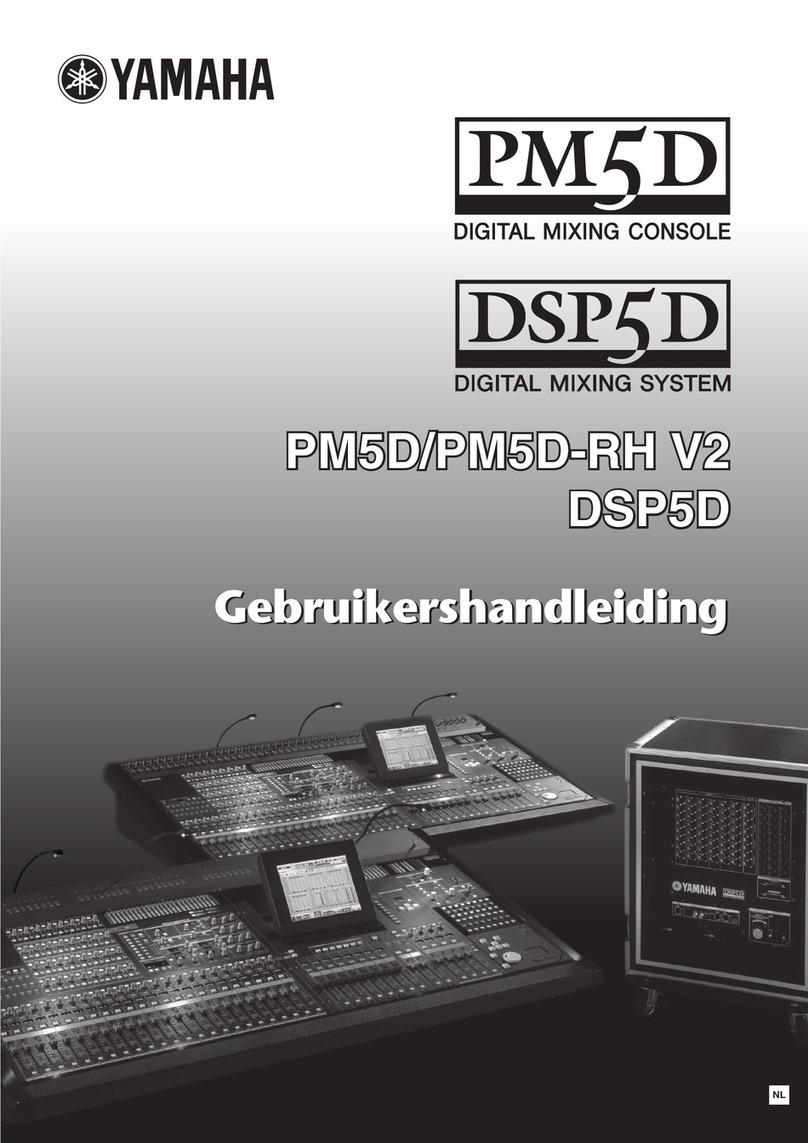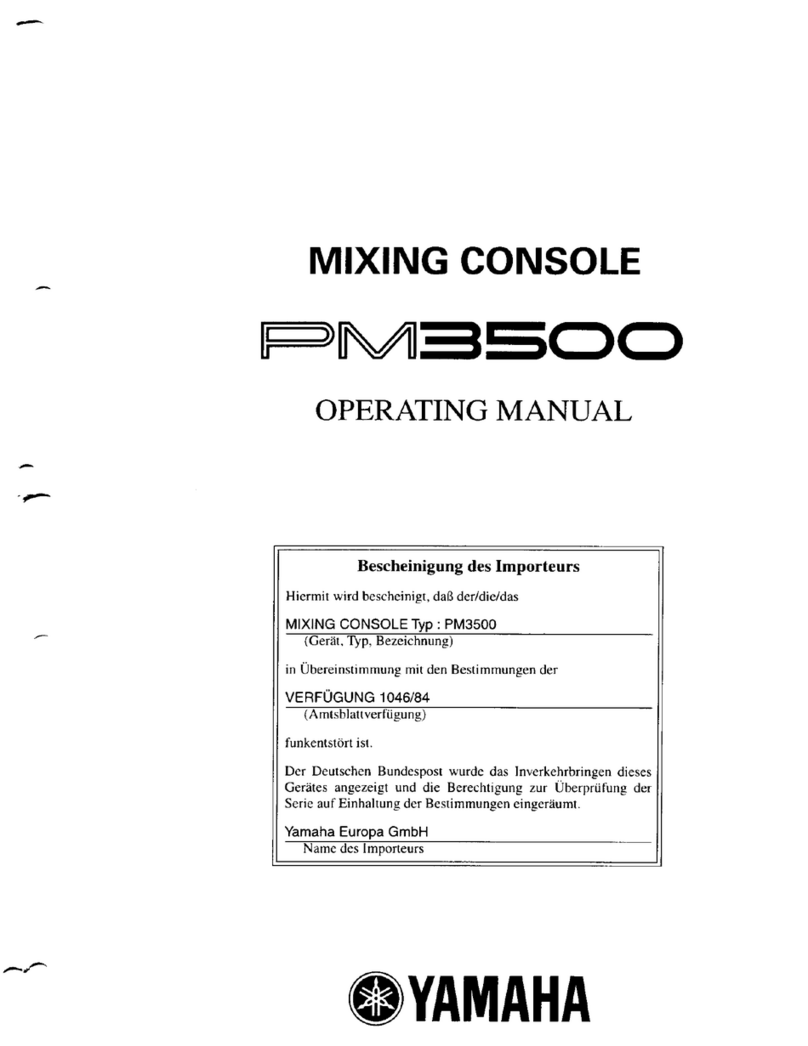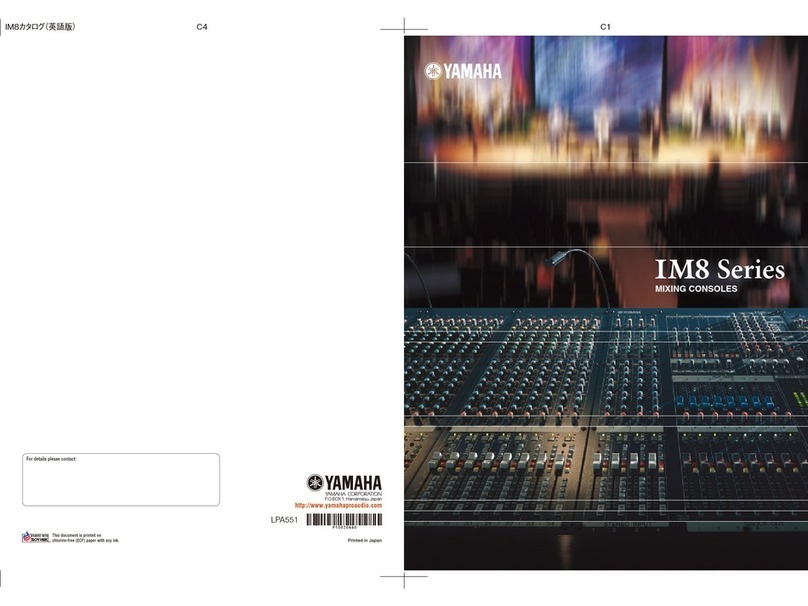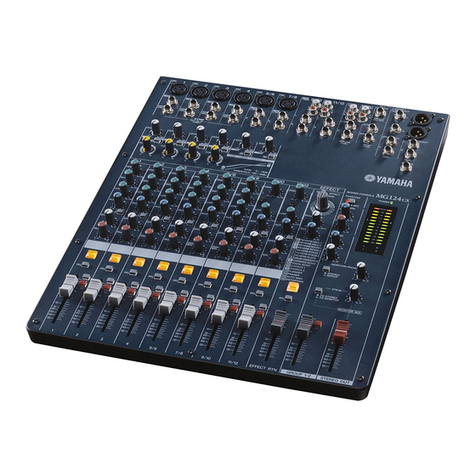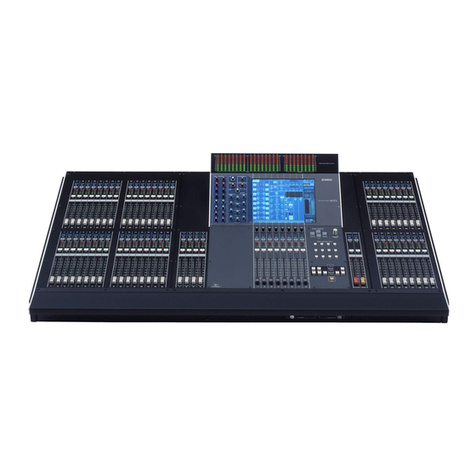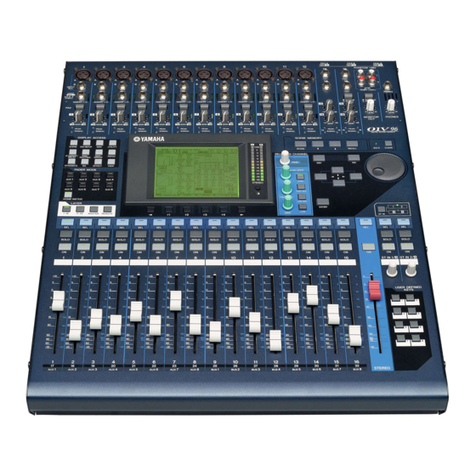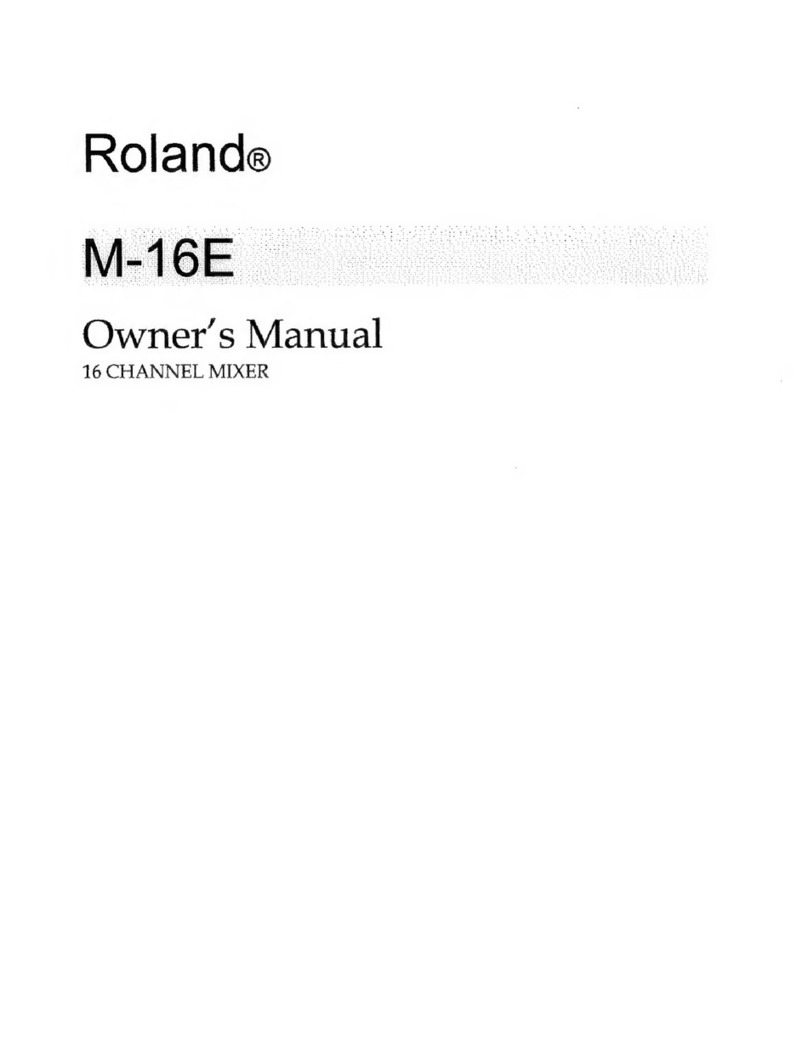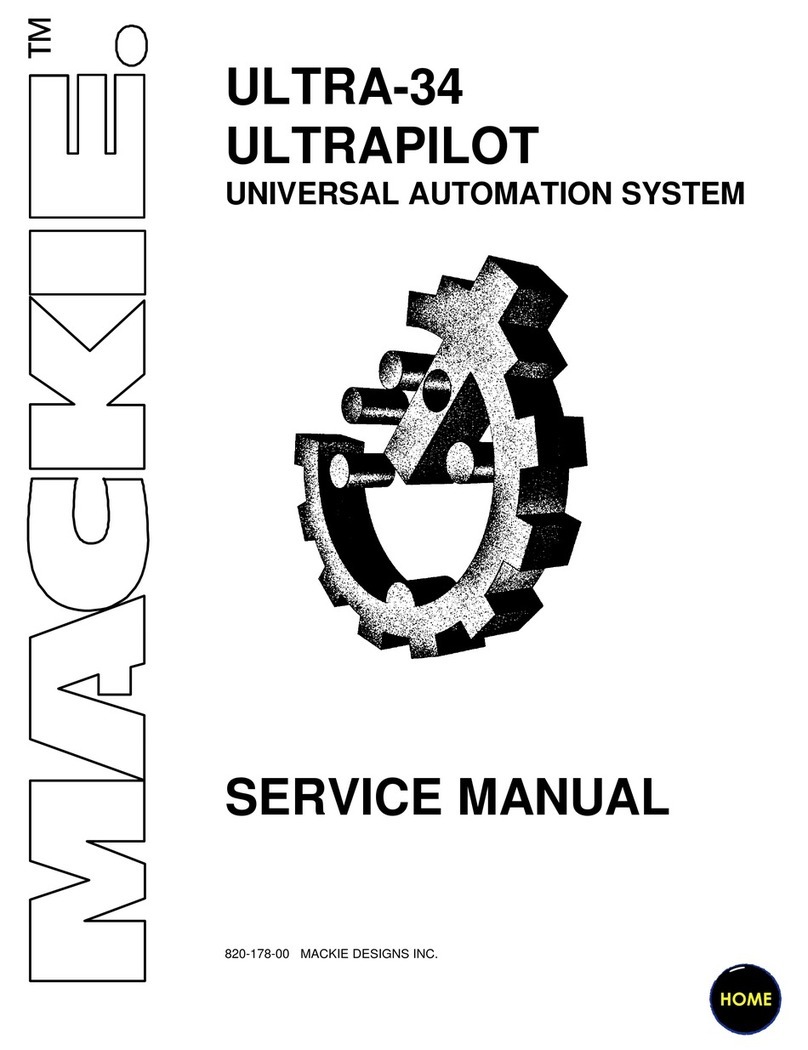
8
Advanced Features Backed by
Efficient Design
You can have features galore, but if they’re not well integrated into a smoothly
operating system that provides easy access, their value will be greatly reduced.
Design of the QL series faders and knobs extends to the nest details of form and
materials. High visibility channel name displays and colors add to overall operation
ease and eciency as well. The interface is the vital connection between console and
engineer, and we have treated it with appropriate care and respect.
Faders Designed for Fit,
Feel, and Visual Feedback
Selected Channel Controls
for Direct, Instant Access
Comprehensive
Fader Bank Section
High Visibility
Channel Names and Colors
The operator’s sonic intent is conveyed
to the console primarily through the
faders. Inheriting the sports car bucket
seat styling of the CL series faders, the
QL faders provide comfortable, sure
operation regardless of where you
nger rests on the knob. Even the fader
knob materials have been selected for
optimum feel. The sides of the knobs
are specially sculpted to allow the fader
scale on the panel to be easily seen from
just about any angle.
The main Selected Channel parameters
are assigned to the knobs located to
the right of the display for immediate
access at any time. In addition to User
Dened Keys to which parameters can
be freely assigned, another traditional
Yamaha digital mixing console feature,
the QL consoles also have on-screen
User Dened Knobs that provide the
same assignable freedom for variable
parameters. In combination, the User
Dened Knobs and User Dened Keys
can signicantly enhance operation
speed and eciency.
All analog inputs are assigned to
one Fader Bank, while other input
and output channels are accessed by
switching banks. Four Custom Fader
Banks are also provided, and these allow
the user to set up any combination
of channels required for maximum
eciency in any application. Custom
Fader setups can also be stored with
scenes and instantly recalled when
needed.
Miniature display panels above each
channel fader show the channel name
as well as fader setting. There’s also
a color bar that glows in eight colors,
matching the channel colors shown in
the main touch-panel display for easy
visual identication. The eight colors
plus “black” provide a total of nine color
groupings. These high-visibility displays
oer excellent legibility in bright
outdoor lighting as well in dim indoor
settings.

